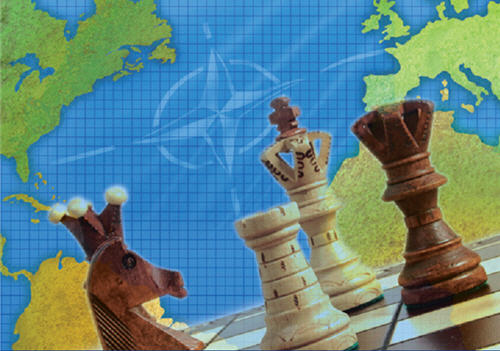
The long awaited new strategic concept, launching what has been termed "NATO 3.0," has been published under the banner "Active Engagement, Modern Defense."
The document is ambitious, committing the "Alliance to prevent crises, manage conflicts and stabilize post-conflict situations, including by working more closely with our international partners, most importantly the United Nations and the European Union." It "restates our firm commitment to keep the door to NATO open to all European democracies that meet the standards of membership," declares that "as long as there are nuclear weapons in the world, NATO will remain a nuclear Alliance," and remains determined "to deploy robust military forces where and when required for our security, and to help promote common security with our partners around the globe."
The preface proclaims, "While the world is changing, NATO’s essential mission will remain the same: to ensure that the Alliance remains an unparalleled community of freedom, peace, security and shared values."
So, what’s new? On the surface, not much.
Some clues are to be found in the section titled "The Security Environment," which begins by acknowledging that "Euro-Atlantic area is at peace and the threat of a conventional attack against NATO territory is low." This is an unalloyed good but, alas, one that makes it rather difficult to justify pouring scarce resources into a military alliance. What’s left is a wide array of potential, if not exactly existential, threats: "the proliferation of ballistic missiles" and "nuclear weapons and other weapons of mass destruction, and their means of delivery;" the "potential impact of terrorist attacks, in particular if terrorists were to acquire nuclear, chemical, biological or radiological capabilities;" the fact that "Cyber attacks are becoming more frequent, more organised and more costly in the damage that they inflict on government administrations, businesses, economies;" and various other threats to the communications infrastructure.
None of these threats are new, exactly, but they’re increasing. Moreover, "Key environmental and resource constraints, including health risks, climate change, water scarcity and increasing energy needs will further shape the future security environment in areas of concern to NATO and have the potential to significantly affect NATO planning and operations."
In order to meet these threats, NATO pledges to "maintain the ability to sustain concurrent major joint operations and several smaller operations for collective defense and crisis response, including at strategic distance." To do this, they will "carry out the necessary training, exercises, contingency planning and information exchange for assuring our defence against the full range of conventional and emerging security challenges, and provide appropriate visible assurance and reinforcement for all Allies."
That’s all well and good. Alas, the very countries pledging to do all that are cutting their military capability to the bone and giving every indication that the cuts will be permanent, if not a first step down a slippery slope. How on earth will they make good on these promises, given that sad fact?
For one thing, the Concept pledges to redouble efforts to work out arms control agreements with Russia, still the most looming threat — particularly to the Alliance’s easternmost members. For another, NATO will promote and cultivate "a wide network of partner relationships with countries and organizations around the globe." Most notably, the Alliance will seek more intertwined operating relationships with the United Nations and the European Union. But they’ll also strive to work more closely with Russia and Central Europe through the existing but moribund Euro-Atlantic Partnership Council and Partnership for Peace.
But these solutions raise more questions than they answer. While achieving efficiencies and burden sharing with like-minded organizations seeking the same objectives is a no-brainer, it’s far from clear that the UN, EAPC, and P4P meet that standard. And, while the EU is an obvious candidate for closer partnership — squabbling between Greece and Turkey notwithstanding — it’s not as if there’s some magic pot of money there. The most significant European militaries of NATO and the EU are identical, after all.
Overall, the robust promises made by the new Strategic Concept are heartening, indeed, to Atlanticists everywhere. But it’s no more clear today than it was yesterday how it is we’ll keep them.
James Joyner is managing editor of the Atlantic Council.
Image: stratcon-2010-crop.jpg
